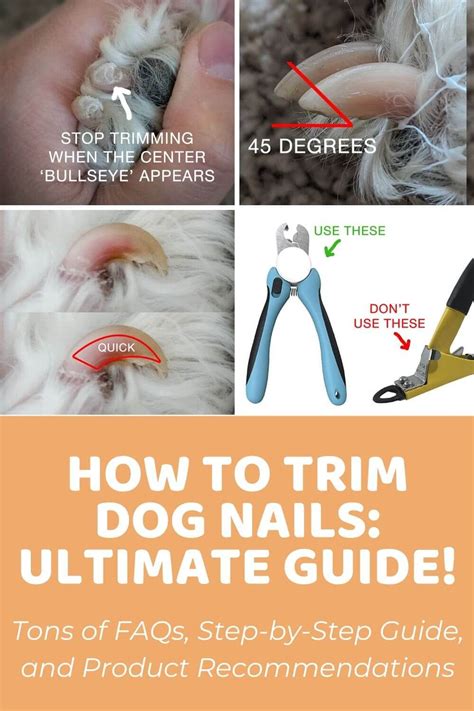Introduction
Long, overgrown nails can cause discomfort, pain, and even lameness in dogs. Regular nail care is essential for their health and well-being. In this comprehensive guide, we will explore the differences between dog nail care and trimming, providing you with the knowledge and tools you need to keep your furry friend’s nails healthy and comfortable.

Dog Nail Care
Dog nail care involves maintaining the overall health and condition of your dog’s nails. This includes:
1. Checking and Cleaning
Regularly check your dog’s nails for any signs of damage, infection, or overgrowth. Clean them gently with a damp cloth or use a pet-safe nail cleaner to remove dirt and debris.
2. Bathing
When bathing your dog, pay attention to their nails. Use a mild shampoo and gently scrub their nails to remove any lingering dirt or bacteria.
3. Grinding
Grinding is a process of smoothing down the surface of the nails using a rotary tool. This helps prevent sharp edges and provides a more comfortable surface for your dog’s paws.
Dog Nail Trimming
Dog nail trimming involves shortening the length of the nails using specific tools. This is necessary to prevent overgrowth and maintain optimal paw health.
1. Nail Clippers
Nail clippers are the most common tool used for trimming dog nails. They come in various sizes and styles, so choose one that is appropriate for your dog’s breed and nail size.
2. Scissors
Scissors can also be used for trimming dog nails, especially for smaller breeds with delicate nails. Use sharp, curved scissors to prevent tearing or splitting the nails.
3. Dremel Tool
A Dremel tool is a rotary tool that can be used to trim and grind dog nails. It provides precise control and allows for gradual shortening of the nails.
Comparison: Dog Nail Care VS. Trimming
| Characteristic | Nail Care | Nail Trimming |
|---|---|---|
| Purpose | Maintain nail health and prevent infections | Shorten nail length |
| Frequency | As needed | Regular (every 2-4 weeks) |
| Tools | Damp cloth, pet-safe nail cleaner, grinder | Clippers, scissors, Dremel tool |
| Difficulty | Easy | Requires some skill |
| Painfulness | Generally not painful | May cause discomfort if not done properly |
Why Dog Nail Care and Trimming Matter
Regular dog nail care and trimming is crucial for the following reasons:
1. Comfort and Mobility
Overgrown nails can cause discomfort and pain, affecting your dog’s mobility. Trimming them ensures a more comfortable walking experience for your furry friend.
2. Health and Hygiene
Long nails can trap dirt and bacteria, leading to infections and other health issues. Regular nail care helps prevent these infections and promotes overall paw hygiene.
3. Safety
Sharp, overgrown nails can puncture the skin and cause bleeding. Trimming them to an appropriate length reduces the risk of accidents and injuries.
How to Trim Dog Nails Safely
If you are comfortable trimming your dog’s nails yourself, follow these steps:
1. Gather Your Tools
Gather your chosen nail clippers or scissors, as well as some treats or praise for your dog.
2. Position Your Dog
Place your dog in a comfortable position, either sitting or lying down. Secure them gently to prevent sudden movements.
3. Examine the Nails
Identify where the quick (the nerve and blood supply in the nail) is located. The quick is pink or gray, and appears as a small dot in the center of the nail.
4. Start Trimming
Hold the clipper parallel to the ground and make small, gradual cuts, avoiding the quick. If you accidentally cut into the quick, apply pressure with a styptic powder or cornstarch to stop the bleeding.
5. Reward Your Dog
Praise and reward your dog throughout the process to make it a positive experience.
Conclusion
Dog nail care and trimming are essential aspects of your furry friend’s health and well-being. By understanding the differences between these two processes and following the tips provided, you can ensure your dog’s nails stay healthy, comfortable, and happy. Remember to consult with a veterinarian or professional groomer if you have any concerns or require assistance with nail care or trimming.





















